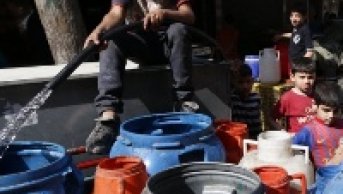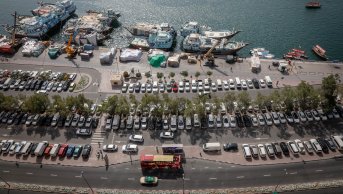Water Resources and Dams in Kurdistan Regional Government
Prime Minister of the Kurdistan Regional Government laid the foundation stone for the construction of Gomaspan-Bastorah dam, 30 km away from the city of Erbil, last week. Through this project, which is estimated to cost some 90 billion dollars, it is aimed to take advantage of and develop rich water resources in KRG. It was noted that lack of development of water resources caused big damage on agriculture and agricultural sector, especially during dry periods.
Laying foundation stones for also other dam projects, the Kurdistan Regional Government announced that construction of three main dams in the region will have been completed by 2018. The Gomaspan-Bastorah dam, of which the ceremony of laying the foundation was held, is estimated to be completed in 1800 days. The project to be constructed by a Turkish company Atach will be the biggest project at a height of 70 meters and with a storage capacity of 3.75 million cubic meters of water in the region since 1991.
There are three major dams within the borders of Kurdistan Regional Government, which are respectively Dukan, Darbandikan and Duhok dams. The total water storage capacity of the three dams is 9.85 billion cubic meters. Also, there are many other small dams in Duhok. Total storage capacity of those dams is 1.505 billion cubic meters. Some 850 hectares of land is irrigated through those small dams. The water storage capacity, aimed to be reached under Kurdistan Regional Government which launched many dam projects, is 38 billion cubic meters.
The Kurdistan Regional Government is rich in water resources and composed of highlands. Khabur, which meets Tigris before reaching Baghdad, the Great Zab, Little Zab, Sirwan and Udhaim rivers are significant rivers in the region. While the aforesaid rivers are generally fed by rain and snow, low precipitation in the region during certain periods leads to drought. Another reason for building dams is to store water to use during dry spells. Especially the dry period between 2001-2004 caused to water shortage in the region. As for ground waters, they are used for drinking and agricultural purposes in the region. Erbil is located in a region that is richer than other provinces, especially Sulaymaniyah, in terms of the ground waters. Sulaymaniyah province has difficulty in meeting the water need of the population.
As in the Middle East in general, ground waters are intensely used also in some regions of Iraq, where surface water is not sufficient, in order to meet the water demand. The management of wells in KRG, which is rich in ground waters and water resources, is under the control of provinces. According to the Ministry of Water Resources; the total number of legal wells dug for drinking water in Duhok, Sulaymaniyah and Erbil in KRG is 15.514. The number of illegal wells that have been identified is 17.530. While the number of legal wells dug for agricultural purposes is 3559, the number of illegal wells with agricultural purposes is 2230. And there are 320 wells, dug for industrial purposes. As a result of the intense use of groundwaters, the water level in the region fell from 200 meters to 400 meters.
Through the dams to be built in KRG, it is aimed to meet the water requirement for agricultural purposes, as well as to decrease the pressure on tourism and especially on groundwaters and also to increase the groundwater levels again. The misuse of water resources rings alarm bells for both surface waters and also groundwater reserves in the upcoming periods. While on the one hand dams are constructed in KRG, on the other hand, development of reasonable management of water resources is on the agenda.
In the past years, the Arab peasants in Kirkuk complained that the amount of water released from the Dukan Dam was not sufficient, and that it was a policy implemented by Kurdistan Regional Government (KRG) in Erbil on purpose. It is believed that the dams will continue to cause problems regarding use of water resources among the ethnic groups in KRG in the upcoming period. Besides, developing the aforesaid water resources will also affect waters flowing into south of the country and those who use them.








